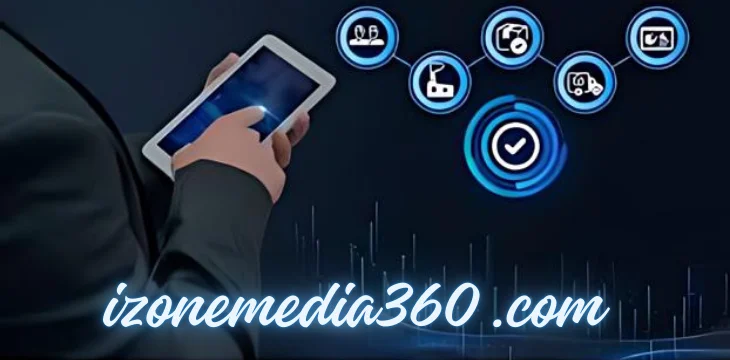In the world of modern networking, understanding the various forms of IP addresses is essential for anyone involved in IT, cybersecurity, or internet infrastructure. One common term that is heard more frequently is IPv6 (Internet Protocol Version 6). In this article, we’ll explore the significance of IPv6 addresses, specifically focusing on the IPv6 address format and its practical use in today’s network infrastructure. We will break down what an address like 2607:fb91:15af:7350::62 represents, how IPv6 works compared to IPv4, and why this transition is crucial for the future of the internet.
Understanding IP Addresses: A Quick Recap
Before diving into the specifics of IPv6, let’s recap the basic function of an IP address. An IP (Internet Protocol) address is a unique identifier assigned to each device connected to a network, allowing data to be routed from one device to another. The familiar IPv4 addresses, which most people have seen, appear in the format of four groups of numbers separated by periods, such as 192.168.1.1.
However, as the number of devices connected to the internet exploded over the years, the limited pool of IPv4 addresses (approximately 4.3 billion) became insufficient to meet the demand. This is where IPv6, the successor to IPv4, steps in.
Introduction to IPv6
IPv6 was developed to address the limitations of IPv4. Its key advantage is the vast pool of available addresses, offering approximately 340 undecillion (3.4×10³⁸) unique IP addresses—enough to accommodate the expanding needs of the modern world’s internet-connected devices.
IPv6 addresses are much longer than IPv4 addresses, consisting of 128 bits compared to the 32 bits used in IPv4. They are written as eight groups of four hexadecimal digits, separated by colons. The address 2607:fb91:15af:7350::62 is an example of an IPv6 address, and we will break down its structure below.
The Structure of an IPv6 Address
IPv6 addresses follow a specific structure. An address like 2607:fb91:15af:7350::62 might look complex, but each part has a distinct function.
- Prefix:
- The first part of the address is typically the network prefix, which helps identify the network segment to which the device is connected. In our case, 2607is the network prefix assigned by the internet service provider (ISP). This part of the address tells routers how to forward packets across the network, similar to the way area codes are used in phone numbers.
- Subnet ID:
- The next section, 15af:7350, indicates the subnet identifier. This section allows organizations to create multiple sub-networks within their larger network. It helps with efficient routing and organizing devices into smaller logical groupings.
- Interface ID:
- The last part, ::62, represents the unique identifier for the specific device or interface within the subnet. The double colon (::) is a shorthand notation used in IPv6 addresses to compress consecutive groups of zeros. This helps make the lengthy IPv6 address more readable. Without this shorthand, the address could be much longer, potentially appearing as 2607:fb91:15af:7350:0000:0000:0000:0062.
The flexibility of the IPv6 format, including the use of abbreviations like ::, makes it easier to manage despite its complexity.
The Transition from IPv4 to IPv6: Why It Matters
The shift from IPv4 to IPv6 is not merely a technical upgrade; it is essential for the future of internet infrastructure. As more devices connect to the internet—smartphones, laptops, smart home gadgets, vehicles, industrial equipment, and more—the need for more IP addresses continues to grow. With IPv4, the limited number of addresses means that networks rely on techniques like NAT (Network Address Translation), which allows multiple devices on a local network to share a single public IP address.
While NAT has provided a short-term solution to address exhaustion, it comes with limitations. It introduces complexities in routing, and it can make direct peer-to-peer communication between devices more difficult, complicating the functioning of certain applications like video conferencing, online gaming, and other real-time services.
IPv6 eliminates the need for NAT by offering a virtually limitless supply of IP addresses. Each device can have its own unique IP, streamlining communication and reducing the overhead associated with address translation.
Advantages of IPv6
There are several key advantages to IPv6 that go beyond just the expanded address space:
- Efficient Routing:
- IPv6 simplifies the routing process due to its hierarchical addressing system, which helps routers handle traffic more efficiently. This leads to faster and more reliable data transmission.
- Better Security:
- IPv6 has security features built into its protocol. While IPv4 had security added later (via IPsec), IPv6 was designed with security in mind from the start, making it more resistant to certain types of attacks like IP address spoofing.
- Simplified Network Configuration:
- IPv6 supports stateless address autoconfiguration (SLAAC), which allows devices to automatically assign themselves an IP address without the need for manual configuration or a DHCP server. This feature makes network setup much simpler, particularly for home users and IoT devices.
- End-to-End Connectivity:
- Because each device can have its own unique IPv6 address, end-to-end communication between devices is more straightforward. This is especially useful for real-time applications like VoIP, video streaming, and online gaming.
Challenges of IPv6 Adoption
Despite the clear advantages of IPv6, its widespread adoption has been slow. One of the primary challenges is that many networks, devices, and applications still rely heavily on IPv4. Transitioning an organization’s network infrastructure to IPv6 can require substantial investment in new hardware, software, and staff training.
Furthermore, IPv4 and IPv6 are not inherently interoperable, meaning that devices using different protocols cannot communicate directly. To facilitate communication between IPv4 and IPv6 networks, transition mechanisms like dual stack (where devices run both IPv4 and IPv6) or tunneling (where IPv6 packets are encapsulated inside IPv4 packets) must be used. These workarounds add complexity and slow down the full transition to IPv6.
However, as IPv4 addresses continue to run out, the adoption of IPv6 is expected to accelerate. Organizations that embrace the shift now will be better positioned to handle future networking demands.
Conclusion
The IPv6 address 2607:fb91:15af:7350::62 represents more than just a string of hexadecimal numbers; it’s a glimpse into the future of internet addressing. As the world becomes increasingly connected and the limitations of IPv4 become more apparent, IPv6 offers a scalable, secure, and efficient solution to the challenges posed by the modern internet.
While the transition to IPv6 is still underway, its adoption is inevitable. Organizations and individuals alike will need to familiarize themselves with this new standard to stay ahead in the ever-evolving digital landscape. Understanding IPv6, its structure, and its advantages is crucial as the world moves toward a more connected future where every device can have its own unique place in the global network.









